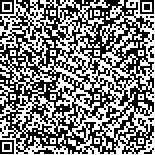| 摘要: |
| [摘要] 目的 探讨新生儿使用经皮二氧化碳分压(TcPCO2)及经皮氧分压(TcPO2)监测的临床应用价值。方法 选取2016-04-01~2017-03-31入住新生儿重症监护室的需呼吸支持的危重新生儿44例,进行持续TcPCO2、TcPO2监测,将监测结果与动脉血二氧化碳分压(PaCO2)、动脉血氧分压(PaO2)结果进行比较。结果 共纳入44例患儿,收集188组数据,Pearson积差相关分析结果显示TcPCO2与PaCO2、TcPO2与PaO2有良好的相关性,Pearson系数分别为0.886、0.676,P<0.005。结论 TcPCO2、TcPO2监测可以准确评估危重新生儿的PaCO2、PaO2,特别是PaCO2。TcPCO2、TcPO2持续监测的使用可以减少对危重新生儿的采血次数、疼痛刺激。 |
| 关键词: 经皮无创血气监测 动脉血气分析 危重症 新生儿 |
| DOI:10.3969/j.issn.1674-3806.2018.03.20 |
| 分类号:R 72 |
| 基金项目: |
|
| Application of transcutaneous non-invasive blood gas monitoring in critically ill neonates |
|
CAI Lin, LI Xiao-dong, LIU Li-fang, et al.
|
|
Department of Neonatology, the People′s of Hospital Shenzhen Nanshan District, Guangdong 518052, China
|
| Abstract: |
| [Abstract] Objective To explore the clinical value of transcutaneous carbon dioxide(TcPCO2) and transcutaneous oxygen(TcPO2) monitoring on critically ill neonates, especially those in need of respiratory support.Methods The critically ill neonates who needed respiratory support in the neonatal intensive care unit between April 1, 2016 and March 31, 2017 were selected,and their continuous TcPCO2 and TcPO2 monitoring was performed. The results of TcPCO2 and TcPO2 measurements were compared with those of arterial carbon dioxide partial pressure(PaCO2) and arterial oxygen partial pressure(PaO2).Results A total of 44 neonates were included and 188 sets of data were collected. Pearson′s product-moment correlation showed that there was a good correlation between TcPCO2 and PaCO2, TcPO2 and PaO2. Pearson coefficient was 0.886 for TcPCO2 and PaCO2, and 0.676 for TcPO2 and PaO2, P<0.005.Conclusion TcPCO2 and TcPO2 monitoring provides more accurate estimate of PaCO2 and PaO2 for critically ill neonates, especially PaCO2. The use of continuous TcPCO2 and TcPO2 monitoring can reduce the number of blood collection and painful stimulus for critically ill neonates. |
| Key words: Transcutaneous non-invasive blood gas monitoring Arterial blood gas analysis Critical illness Neonates |

